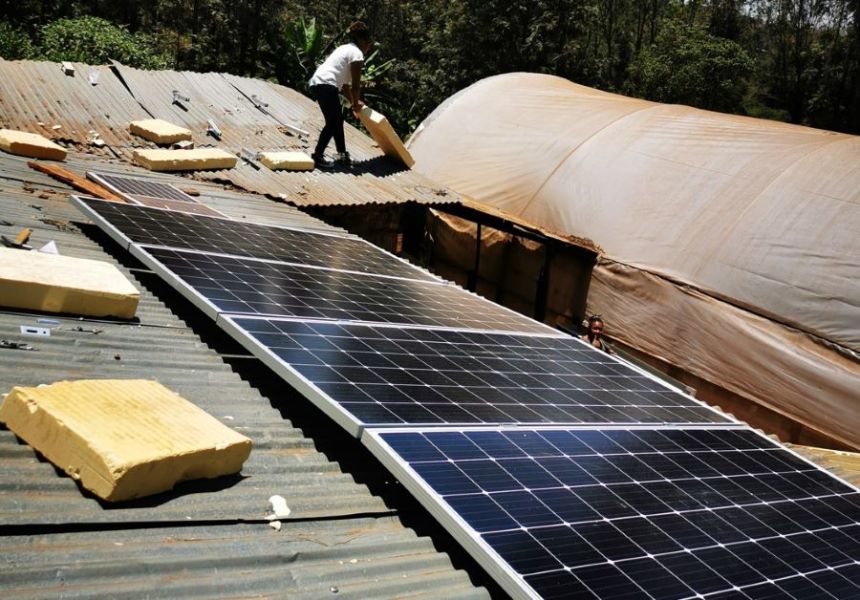SelfChill technology from Phaesun and Solar Cooling Engineering awarded world’s best solar-powered cooling solution.
The most efficient and reliable solar-powered cold room for small-scale farmers in Africa comes from the Allgäu region in Germany. The companies Phaesun GmbH and Solar Cooling Engineering GmbH from Memmingen have developed the SelfChill technology in recent years to operate cooling solutions with solar energy. Now, solar-powered cold rooms around the world have been tested as part of the Off-Grid Cold Chain Challenge. The SelfChill technology, which is used in Kenya and other African countries, was chosen as the test winner and thus wins the Global Leap Award.
In Africa, Latin America and Asia, a large proportion of agricultural produce is grown by smallholder farmers in rural areas. Often, there is no reliable electricity supply in those areas; conventional refrigeration facilities cannot be operated or are unreliable. Up to 40% of agricultural produce spoils due to lack of refrigeration. This is where solar cooling comes in. But the market is still weak due to the low investment potential of the target group, and quality testing is almost non-existent. The Global Leap Initiative, sponsored among others by the World Bank and the IKEA Foundation, aims to spread cooling solutions and has awarded prizes to the best solutions worldwide with the Global Leap Award through the Off-Grid Cold Chain Challenge.
Concentrated innovative power from the Allgäu region of Germany
The solar company Phaesun and the tech start-up Solar Cooling Engineering have been cooperating since 2018 and have jointly developed the SelfChill technology. Solar-powered cooling units are used to generate cold in a water-ice storage tank. This cold can be extracted for various cooling applications using heat exchangers such as cold rooms. The technology is based on high-quality energy-efficient core components, but can be used in a modular way. Different systems can be configured and built using the same core components and other construction materials such as piping, insulation and pumps: From small refrigerators to large milk cooling tanks and cooling containers. The systems are highly environmentally friendly through the use of solar energy and natural refrigerants, and highly energy efficient through the use of thermal ice storage.
The SelfChill partners have so far set up 25 cooling systems in six African countries in Africa together with local partner companies.
“What makes our approach special, besides being environmentally friendly, is its modularity” reports Victor Toledo, founder of Solar Cooling Engineering. We ship only the core components, which saves on transportation costs and emissions. Our local partners then buy additional construction materials locally and can build cooling systems locally according to their customers’ needs.”
Kenyan herb farmers use the technology
As part of the Off-Grid Cold Chain Challenge, the technical performance of 12 cold rooms installed in the tropics and subtropics was field-tested over a period of six months. Among them was a SelfChill cold room, which was installed at a herb farm in the Kenyan village of Thika in 2021. Farmers store the basil and mint crops from their fields there until the produce is picked up for further sale. Florian Martini, Phaesun’s engineer, reports from his project visit, “The cold room in Thika has been in continuous use for 18 months and is bringing enormous benefits to the local farmers. Previously, they had large post-harvest losses because onward transport of the herbs was often delayed and parts of the harvest spoiled. Now they store the harvest in the cold room for up to four days before collection.”
The cold room in Thika showed the best and most reliable performance in the competition and was named Top Winner of the Global Leap Award. “It is a special award for us” explains Martini. “It shows that the technology has not only been accepted by the user, but has also been recognized as best-in-class by an independent testing institute! We are putting the prize money into the further development of our technology!”

